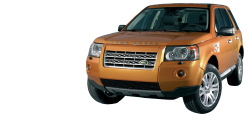
|
|
| Home · FAQ · New Posts · My Posts · PMs · Search · Members · Members Map · Calendar · Profile · Donate · Register · Log In |
 | Home > Technical > My Rear Diff DIY Repair |
 
|
|
|
| Nodge68 Member Since: 15 Jul 2020 Location: Newquay Posts: 1825  
|
Mine actually seized solid while doing 40 MPH just before Christmas, so my diff is now most likely scrap. The cause for this was actually due to there being nothing more than a few drops of oil in it. I've studied the diff design, and come to the conclusion that these continual failures are probably down to a combination of factors. The pre-load is I believe too high, for the size of the front bearing used. High pre-load, will result in delamination of the case hardening, which is what appears to happen on these bearings. This ailment also effects the Discovery 3 front diff, which again is due to excessive pre-load, coupled with too small a bearing for the task. I've rebuilt several D3 front diffs, all suffering the same delamination of the case hardening, and all had excessive pre-load when reassembled using the factory shims, but thankfully its easy corrected before final assembly. Lubrication, or lack of. Looking at the diff design, the oil feed to the front bearing is poor at best. All differentials use oil for lubrication and cooling. A standard diff is designed so that oil is freely thrown around all moving parts by centrifugal action of the crown wheel. Almost all differential cases are designed to channel a large proportion of this oil directly to the outer most pinion bearing. See the size of the cast in oil gallery hump in this Freelander 1 rear diff, where the oil travels to the pinion bearing in large quantities. 
The pinion is spinning fast by comparison to the crown wheel, so needs a good supply of fresh oil to replace that, oil which is displaced by the bearing rollers. This is where the flat design of the Freelander 2 diff is lacking, as there's insufficient height for a large oil gallery to capture this centrifuged oil, limiting the oil supply to the front bearing. If the oil supply to a bearing is compromised, then the bearing will run with less than an ideal amount of lubrication, which then causes it wear faster and to run hot. This lack of lubrication, coupled with the higher than I feel is ideal pre-load, is my best guess as to the early and frequent demise of these bearings. 2009 Rimini Red SE TD4. Soon to be sold. Hyundai Ionic 5 Ultimate on order. Gone. 2006 Tonga Green i6 HSE. |
||
|
 
|
|
| All times are GMT + 1 Hour |
< Previous Topic | Next Topic > |
Posting Rules
|
Site Copyright © 2006-2024 Futuranet Ltd & Martin Lewis
![]()

